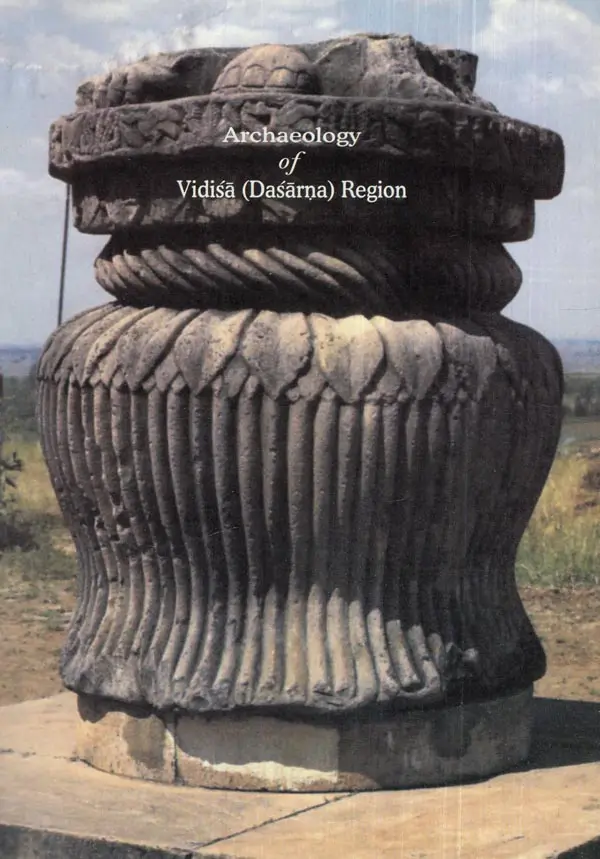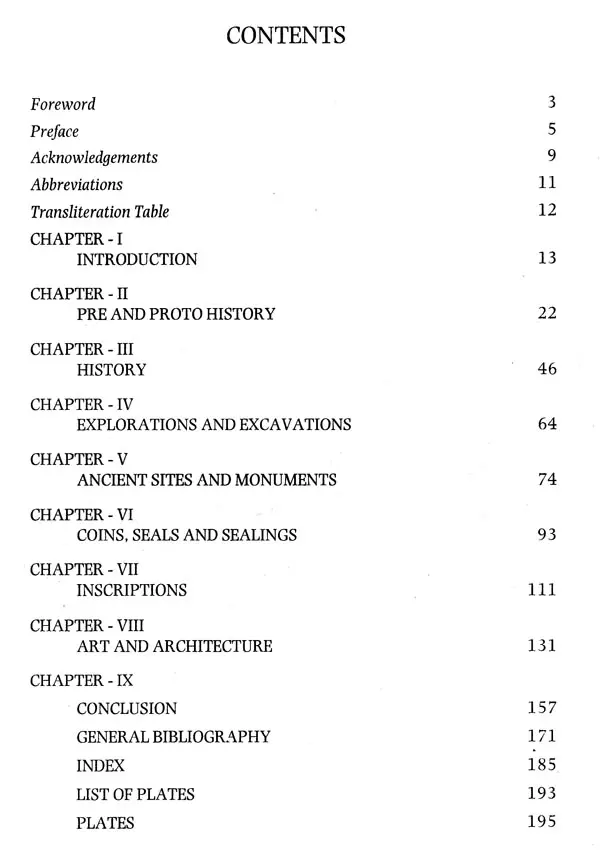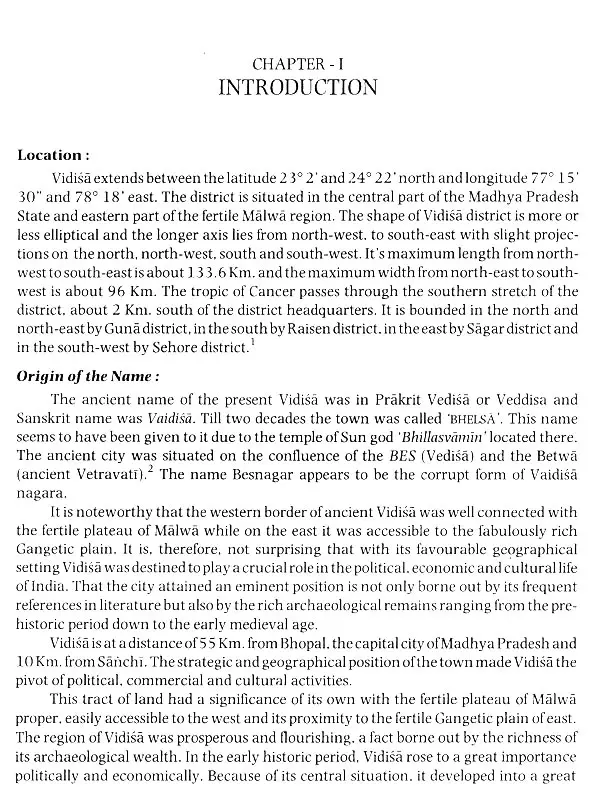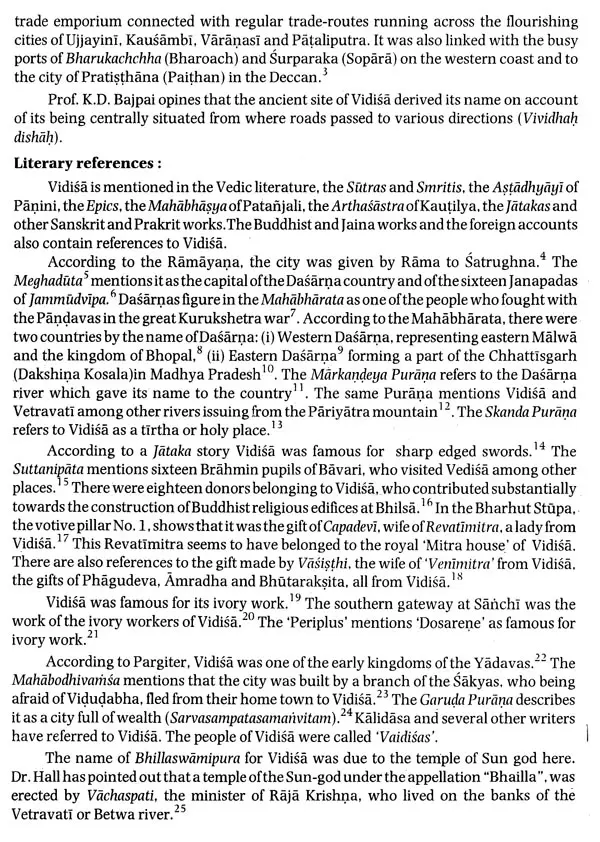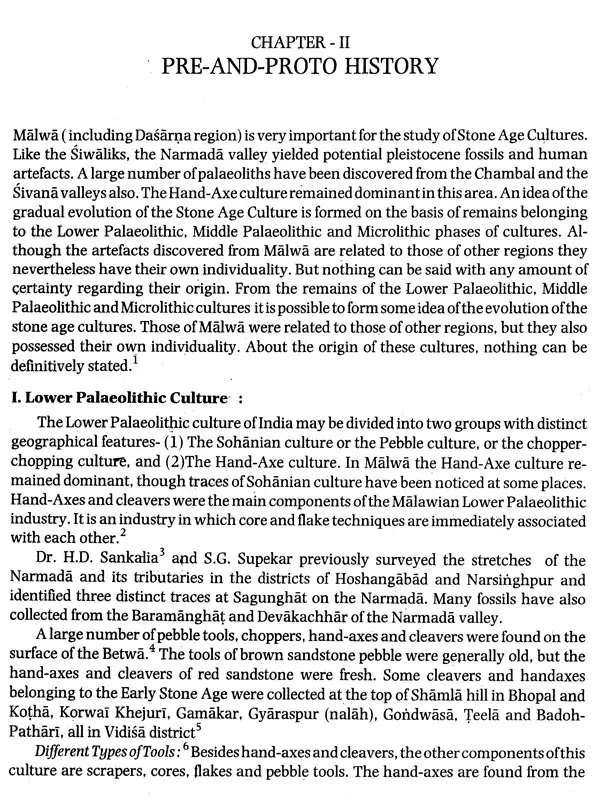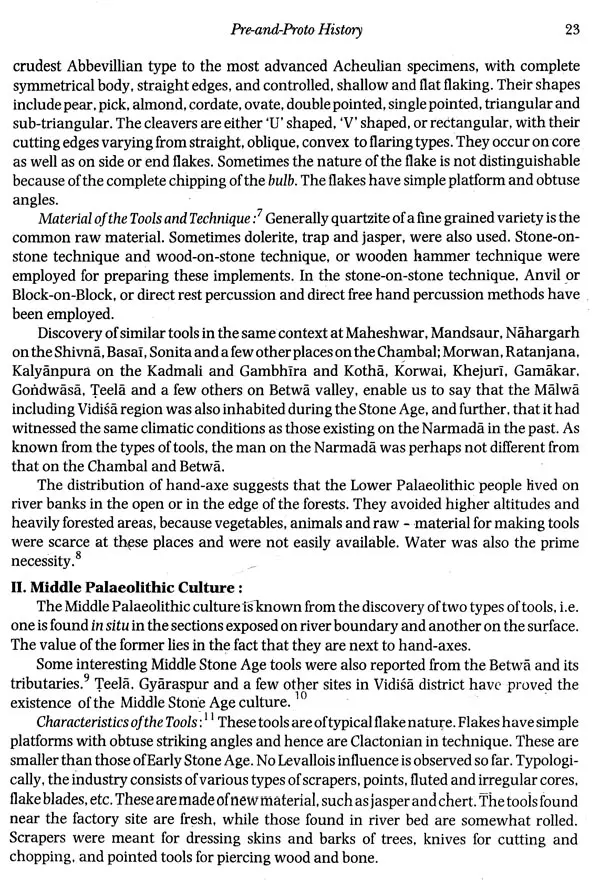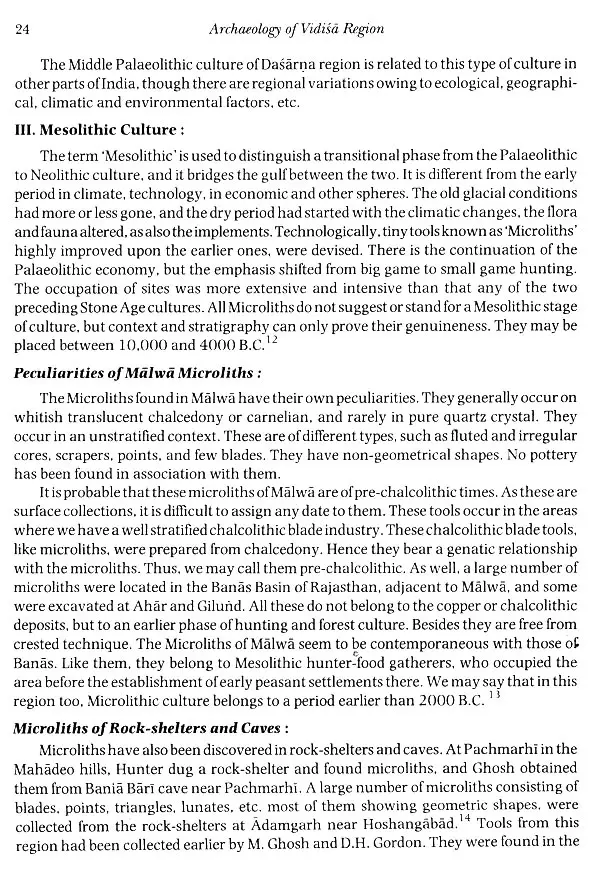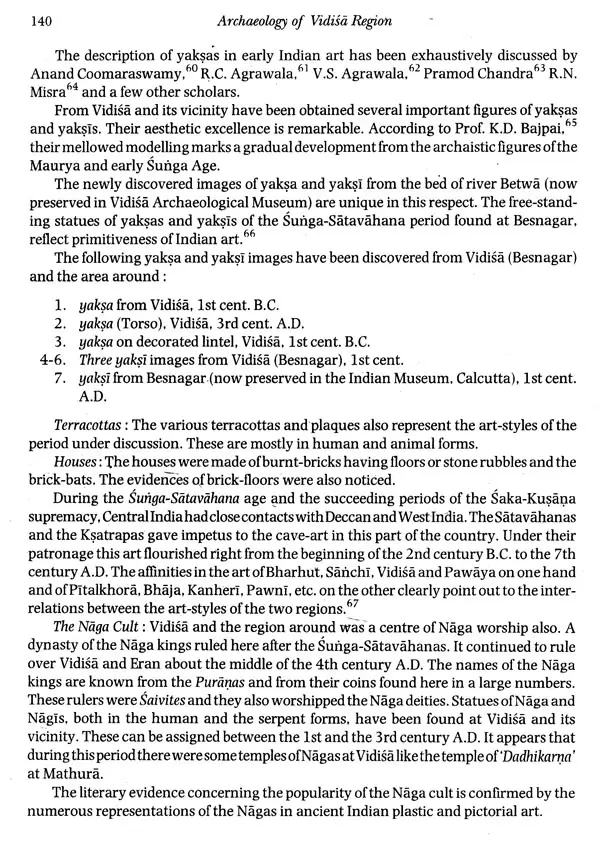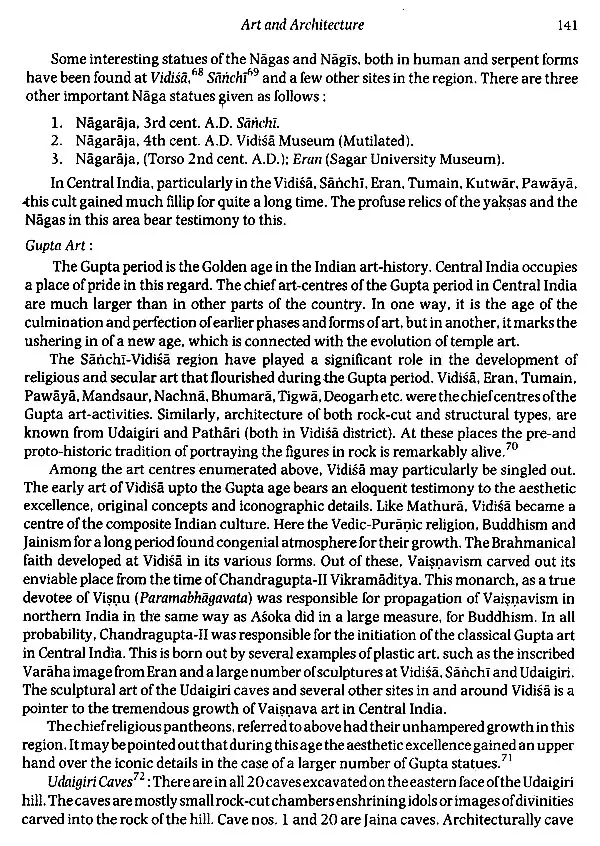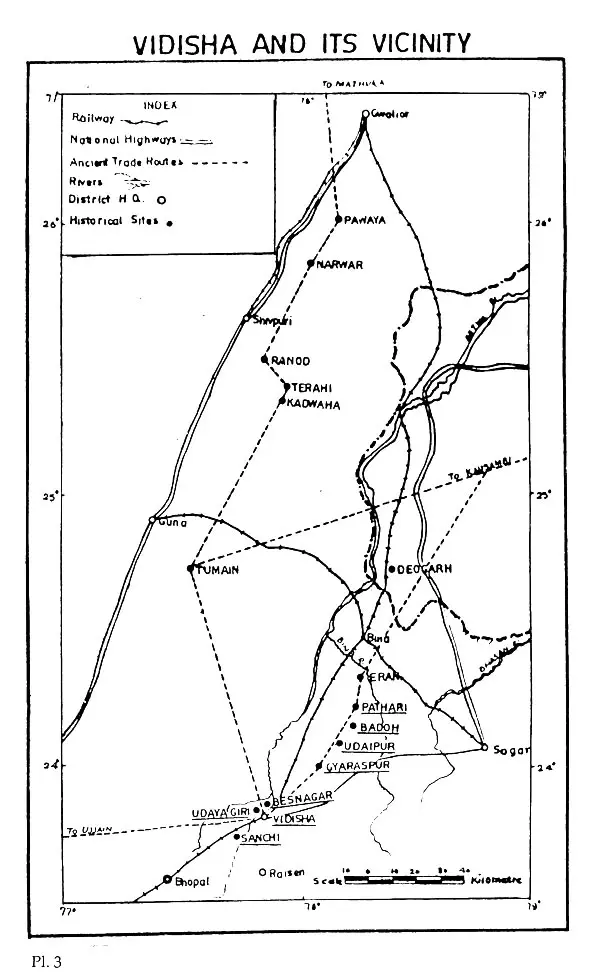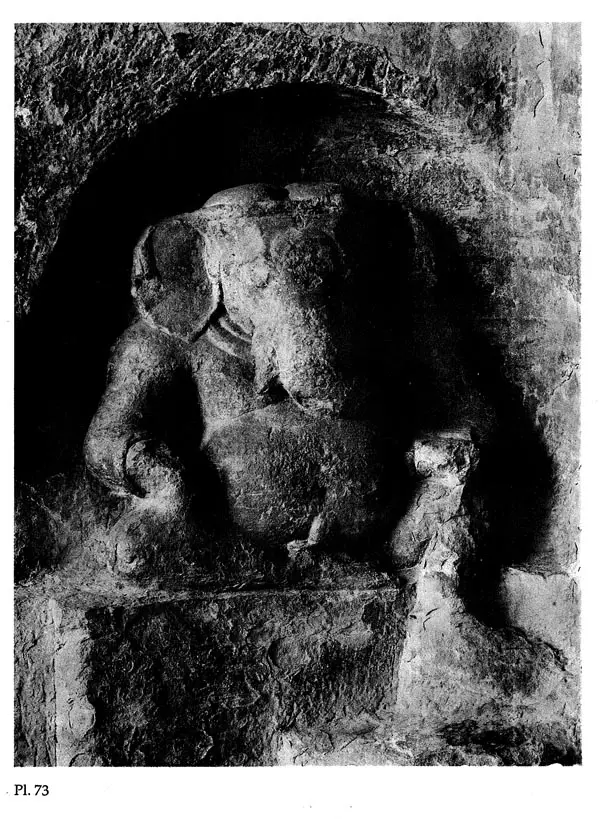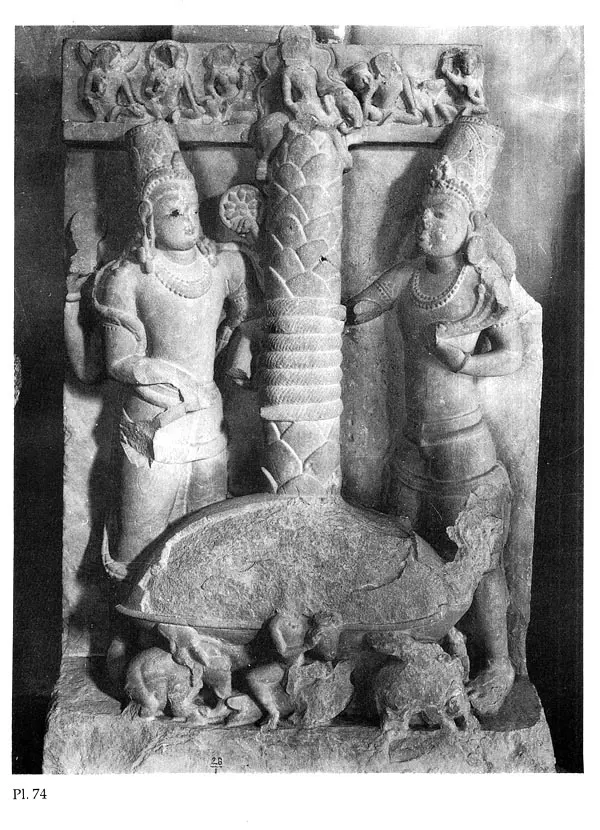
Archaeology of Vidisa (Dasarna) Region
Book Specification
| Item Code: | UAF634 |
| Author: | K. K. Tripathi |
| Publisher: | Sharada Publishing House, Delhi |
| Language: | English |
| Edition: | 2002 |
| ISBN: | 8185616353 |
| Pages: | 255 (Throughout B/W Illustration with Maps) |
| Cover: | HARDCOVER |
| Other Details | 10.00 X 7.50 inch |
| Weight | 820 gm |
Book Description
The present book deals with the archaeology and cultural history of the Betwa Valley. The region occupies an important place in India from the historical and cultural point of view. The ancient town of Vidisha situated on the confluence of the rivers BES and BETWA, was important not only in the Prehistoric Period but also in the subsequent history, where it acquired the status of legend. In the Proto-Historic (Chalcolithic) times, the present Malwa, particularly its eastern and south-eastern parts made a more rapid development, far Malwa including Vidisha-Besnagar region were on the direct route on which were located the developed ancient towns like Ahar, Kalibangan, Lothal, Ropar and still further, Harappa, the chief centre of a great chalcolithic civilization.
Vidisha counted among the well-known cities of ancient India, was the capital of Dasharna or Akara, i.e. Eastern Malwa. During the mythological and classical age, Vidisha was referred to as Janapada. In Sanskrit literature, Eastern Malwa (including the Vidisha region) was referred to as 'Akara', that rose to a great height of cultural superiority in the Buddhist and the subsequent period. The brightest era, of course, lasted from Ashoka's reign to the Imperial Guptas.
The socio-religious life, fine arts (paintings), language, classical music and dance, literature and the economic life of the people of Vidisha was quite sound and the people of Vidisha enjoyed the prosperous and cultural life for quite a long period like Ujjayini, Mathura and Kaushambi etc. The various archaeological sites and cultural centres in and adjoining the Vidisha region has largely contributed for the unhampered cultural growth from the Proto-Historic times to the Paramara Period. This is attested to by the discovery of numerous antiquities recovered from the various sites. The ancient literary evidences and the available source-material also support to the statements that Vidisha region represented one of the chief centres in the country, where religious and cultural integration was fructified.
Dr. K.K. Tripathi (b. 1-3-1944, Distt. Unnao, U.P.); M.A. in Ancient Indian History, Culture & Archaeology; Ph.D. on "Archaeology of Vidisha District". Joint Editor - Recent Perspectives on Prehistoric Art in India and Allied Subjects (1996); two illustrated monographs entitled Malhar Darshan and more than seventy research papers on Indian art, archaeology and the regional history and culture including rock-paintings, published in reputed journals; closely associated with archaeological excavations at Eran, Tripuri, Tumain, Malhar, Nandur etc. since the year 1960-61 uptill now. Explored several archaeological, ancient sites and monuments in M.P. and U.P. Worked as Field-work In charge of Archaeological Excavation and Exploration in the Department of Ancient Indian History Culture and Archaeology Dr. H.S. Gour Vishwavidyalaya, Sagar (M.P.). Dr. Tripathi also has adequate experience of archaeological museum discipline and of teaching the undergraduate and post-graduate classes with specialization in field archaeology. Presently working as Reader and Head, Deptt. of History of Indian Art and Culture, Indira Kala Sangit Vishwavidyalaya, Khairagarh, M.P.; is a Member of several academic and administrative bodies of the University He was nominated as Dean, Students' Welfare and Coordinator, Cultural Programmes, IKSVV; Editor, Kala-Vaibhava, a journal of Indian History, Art and Archaeology.
I have great pleasure in writing the foreword to this revised and updated version of Dr. Krishna Kumar Tripathi's doctoral dissertation approved by this University some years back.
According to ancient Indian literature, Vidisa had the privilege of being the capital of Eastern Malwa (Akara and Dasarna) for a long time and it was an important and flourishing centre of trade and commerce, being located on ancient trade-routes. As was expected from a region with such a rich and old literary tradition, the early explorers immensely succeeded in discovering valuable art and architectural remains and other finds from several sites like, Besnagar, Udayagiri, Sanchi and Eran etc. Later on, some excavations were also undertaken. However, intensive and systematic archaeological activities after independence, brought to light not only the protohistoric remains, but also enabled significant discoveries like the remains of the elliptical temple at Besnagar (C. 4th-3rd century B.C.) and very rich and varied historical material from Eran. Thus, this region can rightly claim to be one of the richest regions yielding vast archaeological wealth of different periods. But the results of all this material have so far been lying scattered and the necessity of presenting its comprehensive and connected account was long felt. This is being fulfilled for the first time by the present work to a great extent.
Due to his long association with the excavations and explorations, the author has acquired a firsthand knowledge of various archaeological materials of the Vidisa region. In the present work, besides providing the prehistoric and protohistoric background of the region, he has highlighted varied numismatic, epigraphic, art and architectural remains uncovered so far from different sites and has presented an account of its cultural history. Undoubtedly, the work will help in a better understanding of the archaeology and cultural history of this region.
I congratulate the author for this valuable contribution which, I am sure, will be welcomed by the archaeologists and researchers and will stimulate further such studies. I wish this University to continue to encourage more research scholars to work on similar line in other regions of Madhya Pradesh to bring out their detailed and critical, accounts of the archaeological wealth and rich cultural heritage.
The Vidisa region occupies an important place In India from the historical and cultural points of view. Archaeologically and historically, Vidisa region is one of the richest regions of Madhya Pradesh. The Archaeological wealth, scattered all over the district speaks about the ancient glory of Vidisa. The ancient town of Vidisa was situated on the confluence of two rivers BES and BETWA, (Vetravati). This place was important not only in the prehistoric period but also in the subsequent history, where it has acquired the status of legend. From very early times to the period of the Paramara rule in Malwa, Vidisa played a significant role ha the development of the Indian culture.
In the Proto-historic (Chalcolithic) times the present Mal., particularly its eastern and south-eastern parts made a more rapid development than the other parts of Madhya Pradesh. The chief reason of this seems to be that apart from enjoying a bracing climate, these parts of Malwa including Vidisa-Besnagar were on the direct north-western routes on which were located the towns like Ahar, Kalibangan Lothal, Roper and still further. Harappa, the chief centre of a great chalcolithic civilization.
Vidisa was counted among the well-known cities of ancient India. It was the capital or Dasrana Janapada or Akara, i.e. Eastern Malwa During the mythological and classical Age, we Grad a Puranic reference to Vidisa as Janapada. In Brahmanical, Buddhist and Jaina literature, Vidisa has been called by different names, viz. Vessanagar, Vaishvanagar, Visvanagar, Vaidisa, Veddisa, Besnagar, etc.
During the 6th century B.C. Vidisa's place was very exalted in all respects. The economic prosperity was due to its advantageous position on the cross-roads of two important trade-routes. One of these ran from Pratisthan (Paithan in the Godavari region) to Mahismati, Ujjayini, Gonarda (Guna). Vaidisa (Vidisa) and Kausambi, while the other connected Bharukachcha (Bharoach) and Surparaka on the Arabian sea, to Mathura via Ujjayini. A branch of this route ran from Vidišá to Kausambi through the valley of Betwa or Vetravati and then to Pataliputra. In his Meghadutam Kalidasa has referred to Vidisa as a place where everybody gets wealth to his heart's contents.
In Sanskrit literature ancient Malwa, including the Vidisa region was referred to as ‘Akara’, that rose to a great height of cultural superiority in the Buddhist and subsequent periods. The brightest era, of course, lasted from the Asoka's reign to the Imperial Guptas. Sanchi stood in symbolic relation to Buddhism. Equally interesting is the elliptical Vaisnava temple and the Heliodoros pillar at Besnagar, which gives the evidence of Brahmanical influence co-existing with Buddhism in this area.
Numerous uninscribed and inscribed Tribal and Early punch-marked coins: coins of the city-state, bearing the legends in early Brahmi characters ‘Vedisa' or 'Vaidisa’, were also known to us besides the coins and inscriptions, seals and sealings and several other minor antiquities, the monuments, stone architectural and art-pieces, ranging from the early historical period to the Paramara period. The chief dynasties who ruled over Vidisa, were the Maurya, the Sunga-Satavahana, the Kusana-Saka-Ksatrapa, the Naga, the Gupta and the Paramara.
